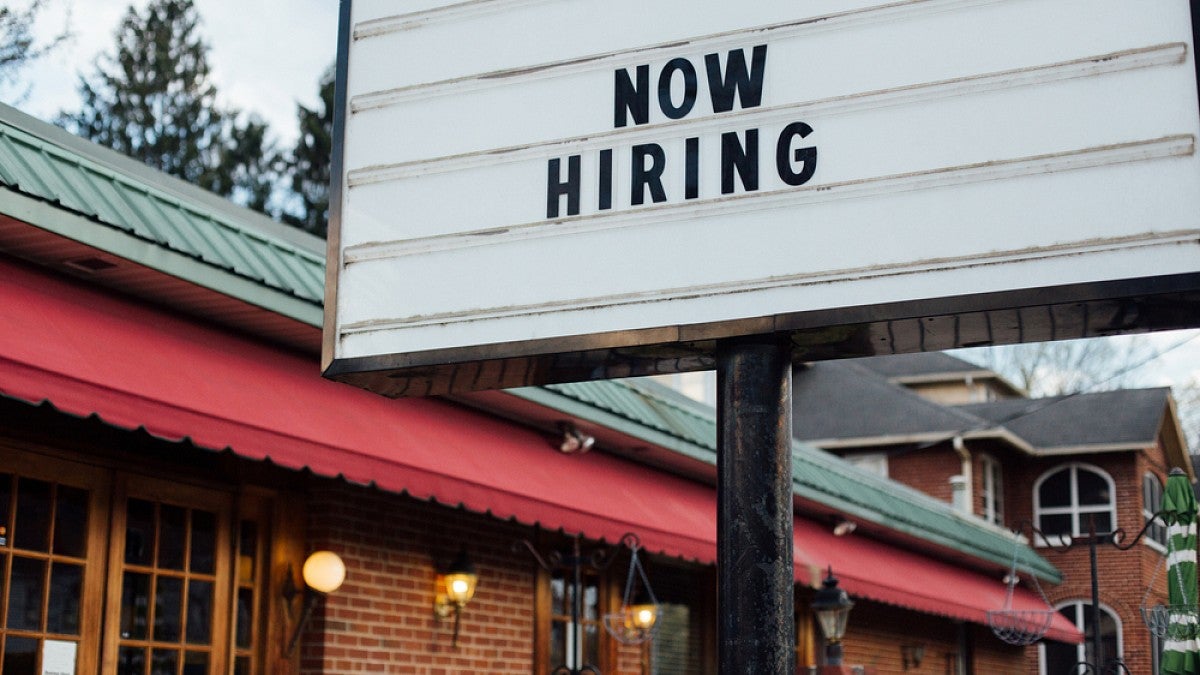Like a case of long COVID-19 itself, the effects of the coronavirus continue to linger in pockets of the state and its economy.
They affect Oregonians to a wide range of degrees, ranging from the toll of missed work and lost wages due to long COVID to disruptions with child care and an uneven recovery in the workforce, among others.
Those are among the findings in the latest report, “The Long Shadow of COVID: The Impact of the COVID-19,” from Robert Parker and Benjamin Clark of the Institute for Policy Research and Engagement in the School of Planning, Public Policy and Management, part of the College of Design. The report is based on a survey of 695 Oregonians evenly divided among rural and urban areas, conducted in May and focused on the pandemic’s effects on workers and households.
The effects of long COVID hit an estimated 90,000 to 280,000 Oregonians, resulting in $300 million to $1.1 billion in lost wages. An estimated 10,000 to 30,000 Oregonians have missed more than a year of work.
“Given the size of our state, that's pretty sizable,” Clark said. “Another interesting thing that we found is that of the people that have long-COVID symptoms themselves, 30 percent of them have an immediate family member with long COVID as well.”
Family and friends caring for those with long COVID have lost an additional $390 million to $830 million in wages.
“That's probably going to continue to have an effect moving forward,” Clark added. “It's not like, OK, the pandemic's done and then there's no more lost wages. So if somebody's missed a year of work, they can still get COVID today and tomorrow and next month and later in the year.”
Another, sometimes overlooked, aspect of daily life COVID-19 is continuing to disrupt is child care. Based on the survey results, Clark and Parker estimate 63,000 to 92,000 parents have missed at least one day of work because of child care issues, costing them from $530 million to $840 million in lost wages.
“I think what that creates is a lot of uncertainty, not only for that individual, but for their employer as well,” Clark said. “There are also these ripple effects that get created. So it's not just COVID itself, it's somebody else's kid with COVID that impacts me. It's not just long COVID, it's my family members with COVID. It's not just having COVID, but it's the long COVID that comes after.”
The state’s labor force recovery continues to remain uneven, varying by region and sector of the economy. Oregon had 21,000 fewer jobs in May 2022 than in January 2020. Despite the overall job recovery, several sectors continue to struggle, particularly leisure and hospitality, accommodation and food services, arts and entertainment, and health care and social services, Parker and Clark wrote.
The three sectors related to leisure and hospitality had 31,600 fewer jobs than in January 2020. Health care and social services had nearly 7,000 fewer jobs in May 2022 than in January 2020.
Complicating the landscape, nearly 7 percent of respondents to the May survey reported retiring, a “substantial increase” from the 2.4 percent in the team’s previous survey in November 2021.
“Between retirements, individuals dropping out of the labor force due to long COVID, continued resignations and low unemployment rates, we anticipate employers will experience challenges due to labor supply for the next two to five years,” Parker said.
Combined, it adds up to some employers — 71,000 businesses, according to an Oregon Employment Department report the authors cite — struggling to fill open positions.
“What we’re hearing from a lot of folks, more anecdotal than specifically from from the survey, is that employers are changing their expectations of their business,” Clark said. “It may be that they have to pay people more in order to get the people that they want.”
One bright spot: Oregonians’ job experience seems to have improved somewhat between November 2021 and May 2022. While stress, burnout and little control over workload continue to be challenges for many workers, they report improvements in those areas.
“The fact that we're sort of slowly emerging from COVID restrictions to a world that doesn't have that certainly helps to reduce some of those burnout- and stress-related things,” Clark said. “But I just don't think that we're out of the woods by any stretch of the imagination. All these different little things are going to affect different groups of people in different ways for months or years to come.”
—By Jim Murez, University Communications


